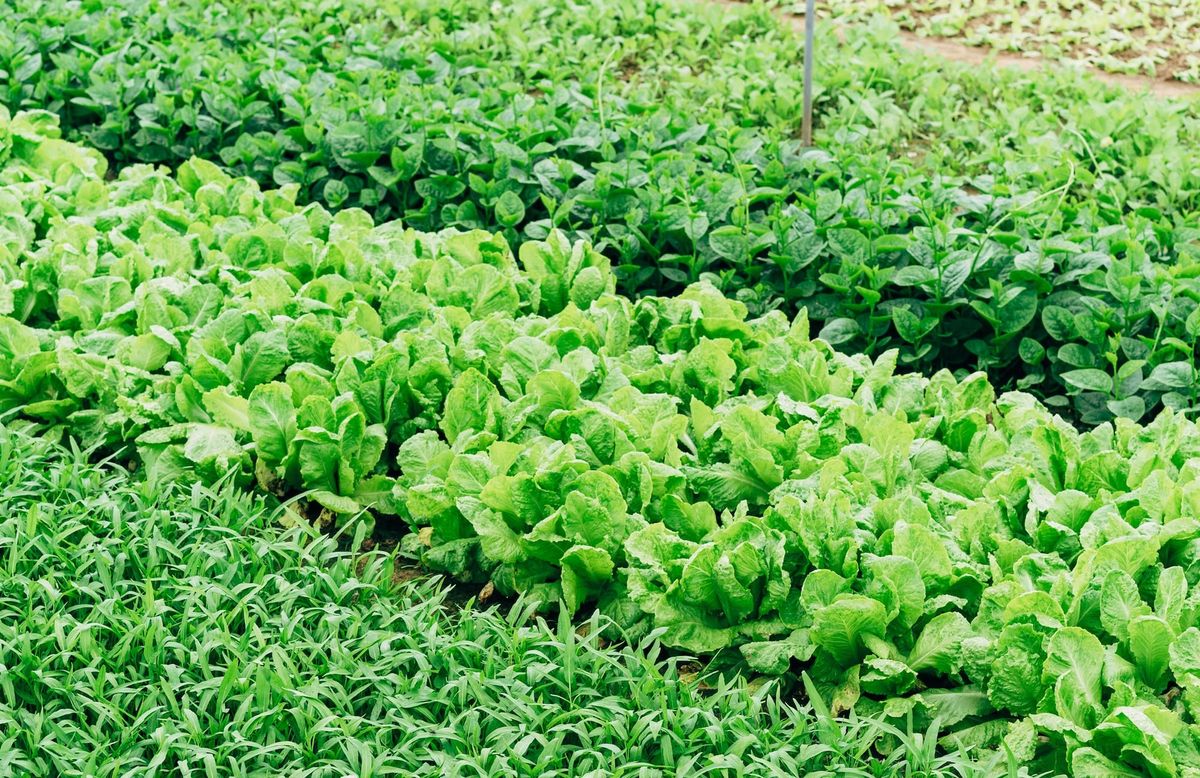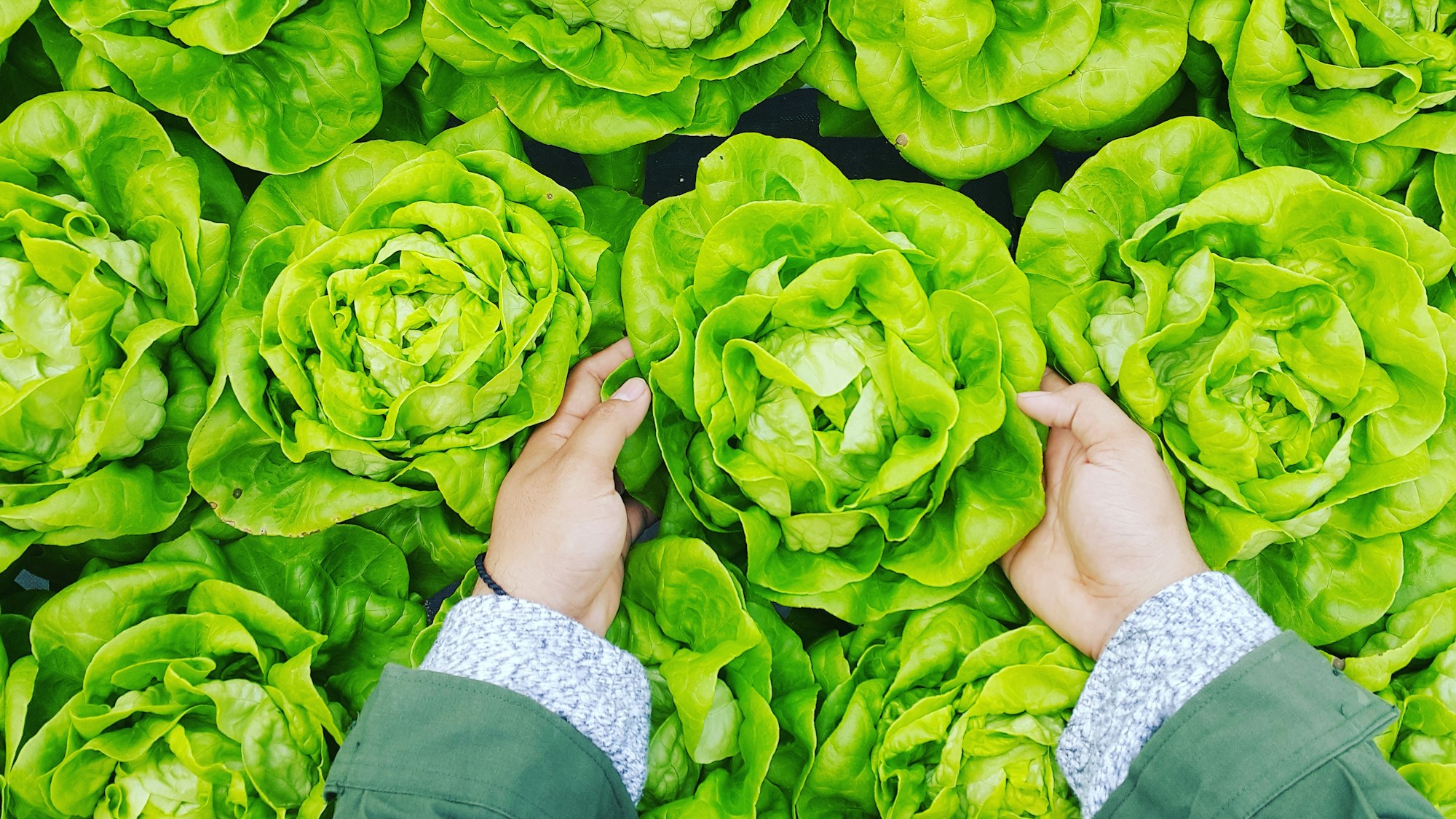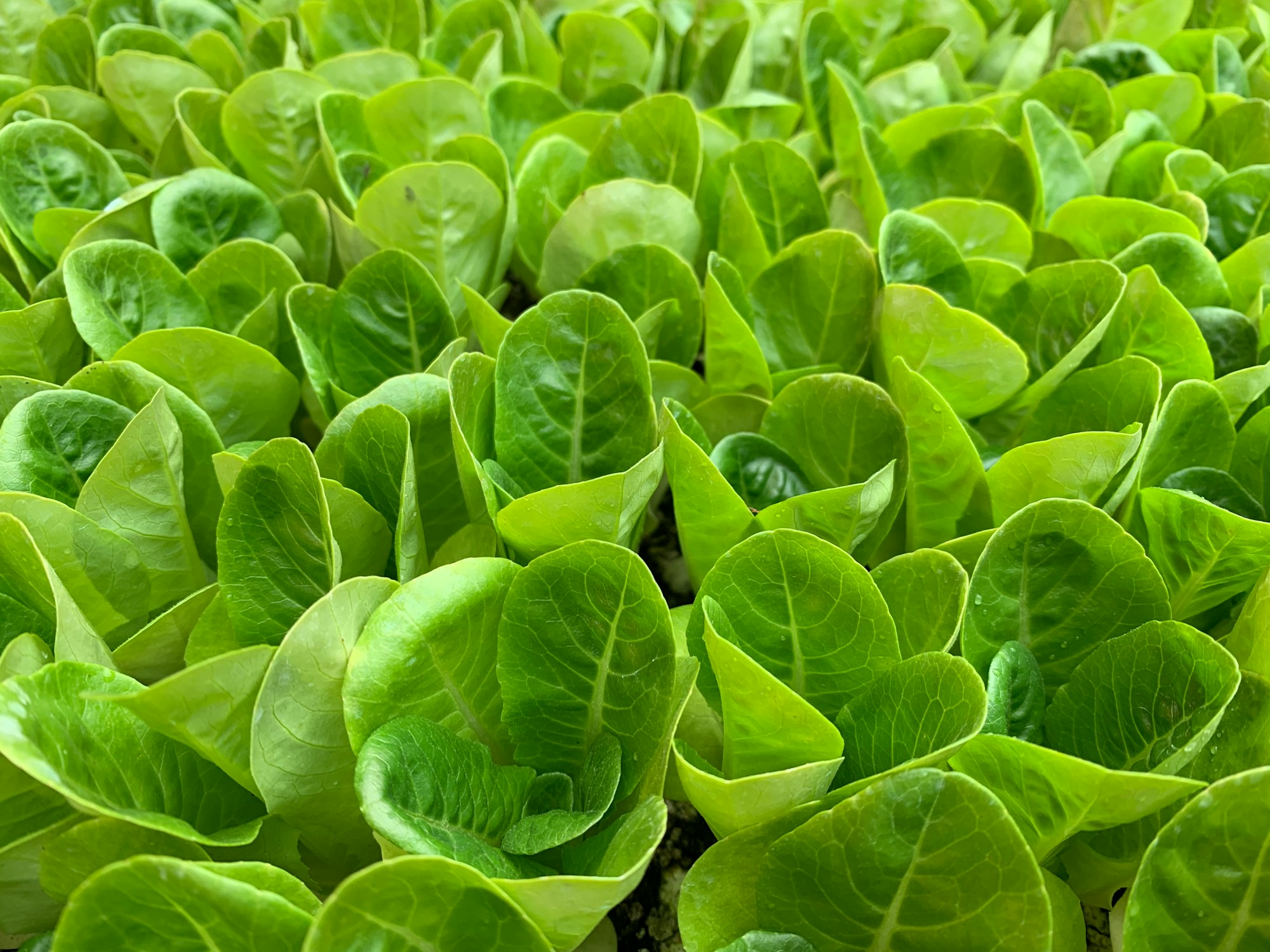How to Grow Lettuce
Whether you're a seasoned gardener or a beginner, planting lettuce is a great way to get started with vegetable gardening.

First, choosing a suitable variety of lettuce to plant is essential. Many types of lettuce exist, including loose-leaf, Romaine, and head lettuce.
Depending on your preference, you may want to plant various varieties. Lettuce is a cool-season crop, so it's best to plant it in the spring or fall when temperatures are mild.
In this article, we'll provide tips on how to plant lettuce both in the ground and in containers so you can choose the best method for you.
Once you've chosen your lettuce variety and planting method, it's time to start. Planting lettuce is relatively easy, but there are a few things you'll need to keep in mind to ensure a successful harvest.
In the following sections, we'll go over the steps you need to take to plant lettuce, including preparing your soil, planting your seeds, and caring for your plants.
Understanding Lettuce
Lettuce (Lactuca sativa) is a leafy green vegetable from the daisy family. It is a cool-season crop that thrives between 60 and 65°F (16 to 18°C).
Lettuce Varieties
Lettuce varieties can be categorized into four main types: Crisphead, Romaine, Butterhead, and Leaf.
- Crisphead lettuce, also known as head lettuce, forms tight, compact heads and has a crispy texture.
- Romaine lettuce, or Cos lettuce, has elongated leaves and a crunchy texture.
- Butterhead lettuce has a soft, buttery texture and forms loose heads.
- As the name suggests, leaf lettuce has leaves that grow in a loose, open arrangement and can be harvested continuously.

When selecting lettuce varieties, it is essential to consider the growing conditions, as some varieties are better suited to particular climates and soil types than others.
For example, Iceberg lettuce is a popular variety, but it is not well-suited to hot, dry climates.
Understanding the different types and varieties of lettuce can help you choose the best variety for your growing conditions and culinary needs.
Whether you prefer the crisp texture of Romaine or the soft, buttery texture of Butterhead, there is a lettuce variety that is sure to please.
Preparation for Planting
Before planting lettuce, it is crucial to prepare the soil properly.
Start by selecting well-drained soil that is rich in organic matter. Lettuce grows best in cool soil with a pH between 6.0 and 6.5.
If necessary, you can use a soil test kit to check the pH of your soil.
Choose a location that receives full sun or partial shade. Lettuce prefers a spot with 5 to 6 hours of sunlight per day, but it can benefit from some shade during the hottest part of the day, especially in the summer.
Plan your planting date carefully.
Lettuce is a cool-season crop that grows best in the spring and fall. In the spring, plant lettuce seeds 2 to 4 weeks before the last expected frost date. In the fall, plant seeds 6 to 8 weeks before the first expected frost date.
Be sure to keep the soil moist during the germination period.
Planting Lettuce

You have two options to plant lettuce: seed directly into the soil or transplant seedlings.
If planting seeds directly into the soil, prepare it by loosening it to a depth of 6-8 inches and adding compost.
Plant seeds 1/4 inch deep and 1 inch apart, and cover them with soil. Water the seeds gently, and keep the soil moist.
Once the seedlings are 1-2 inches tall, thin them to a spacing of 6-12 inches apart, depending on the variety.
If you choose to transplant seedlings, start them indoors 4-6 weeks before the last frost date in your area.
Once the seedlings have developed their first true leaves, transplant them into larger containers or the garden.
Space the seedlings 6-12 inches apart, depending on the variety. Water the seedlings well, and keep the soil moist.
To ensure the best results, plant lettuce in cool weather, when soil temperatures are between 45 and 75 degrees Fahrenheit.
Use row covers or a cold frame to protect the plants from frost and moisten the soil. Additionally, ensure the plants have plenty of sunlight or afternoon shade if the temperatures soar.
Care and Maintenance
To ensure healthy growth, lettuce requires proper care and maintenance. Here are some tips to keep your lettuce plants healthy and thriving.
Potential Problems
One of the most common issues with growing lettuce is overwatering. Ensure the soil is moist but not waterlogged, as excess moisture can lead to root rot and other fungal diseases.
Water your lettuce plants regularly, especially during hot and dry weather.
Another issue to watch out for is nitrogen deficiency.
If your lettuce leaves are turning yellow or have stunted growth, it may indicate nitrogen deficiency. Fertilize your plants with a high-nitrogen fertilizer to correct this issue.
Mulching around the base of your lettuce plants can help retain moisture in the soil and prevent weed growth. Additionally, pruning your plants can promote healthier growth and avoid overcrowding.
Consider using row covers to protect your lettuce plants from pests and harsh weather conditions. Regularly inspect your plants for signs of pests or disease and take appropriate action.
Following these care and maintenance tips ensures that your lettuce plants thrive and produce a bountiful harvest.
Growing Lettuce in Different Settings
Lettuce can be grown in various settings, making it a versatile crop for gardeners.
Lettuce is an easy-to-grow crop for beginners that can be grown in containers, making it perfect for those with limited space.
When planting in containers, ensure the soil is loose, well-draining, and moist but not soggy.
Lettuce is a cool-season crop that thrives in the winter season. It is a perfect crop to grow during the cold months as it can withstand frost and low temperatures.
When planting lettuce in the winter, amend the soil with plenty of compost for added fertility and ensure it receives at least 5 to 6 hours of sun.
Lettuce can also be grown alongside other garden vegetables, such as tomatoes and corn. When planting lettuce alongside other vegetables, ensure it is spaced at least 8 to 12 inches apart to give it room to mature.
Additionally, planting lettuce in full sun will generate faster leaf production but can encourage bolting during hot weather.
Conclusion
Planting lettuce is an easy and rewarding experience. You can grow fresh lettuce in your garden with just a few simple steps.
Remember to choose a location with 5 to 6 hours of sun but can benefit from afternoon shade when temperatures soar.
Make sure you plant each seed 1/2 inch deep in the soil and leave proper spacing of about 12 inches between the rows.
As the seeds germinate, you may have to thin them out. Keep the soil moist but not soggy, and you should have a successful lettuce crop.
Lettuce is a versatile and nutritious vegetable used in various dishes. Its crisp texture and mild flavor make it perfect for salads, sandwiches, and wraps.
Frequently Asked Questions
What are the best lettuce varieties to grow in the summer?
Growing heat-tolerant lettuce varieties like loose-leaf, butterhead, and romaine lettuce for summer is best.
These varieties can resist bolting and are less likely to turn bitter in hot weather. Some popular summer lettuce varieties are Black-Seeded Simpson, Jericho, and Nevada.
How can I grow romaine lettuce from seeds?
To grow romaine lettuce from seeds, prepare the soil by adding compost and organic matter. Sow the seeds ¼ inch deep and 18 inches apart.
Keep the soil moist and weed-free; once the seedlings have grown to 3-4 inches, thin them to 6-10 inches apart.
What is the best way to plant lettuce in a raised bed?
To plant lettuce in a raised bed, prepare the soil by adding compost and organic matter. Sow the seeds ¼ inch deep and 6-8 inches apart.
Keep the soil moist and weed-free; once the seedlings have grown to 3-4 inches, thin them to 6-10 inches apart.
How can I grow lettuce from a stump?
To grow lettuce from a stump, cut off the top of the head and use the leaves for cooking. Leave about 1 inch of the stump intact.
Place the stump in a shallow water dish and change the water daily. Once the lettuce has grown roots, plant it in the soil. Keep the soil moist and give the lettuce plenty of sunlight.
What is the best way to grow lettuce in water?
To grow lettuce in water, fill a shallow dish with water and add nutrient-rich liquid fertilizer.
Sow the seeds on top of the water and keep the dish in a sunny location.
Change the water every day and add more fertilizer as needed. Once the lettuce has grown to 3-4 inches, transfer it to the soil.


